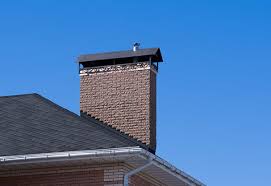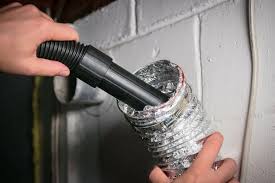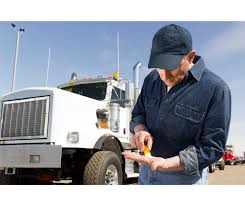What Is a Chimney Relining, and Why Is It Important?

Strong 8k brings an ultra-HD IPTV experience to your living room and your pocket.
If you own a fireplace or wood stove, you’re probably familiar with the importance of regular chimney maintenance. However, there’s one crucial aspect of chimney upkeep that often goes overlooked—chimney relining. Over time, the liner in your chimney can become damaged, deteriorated, or even completely worn out, which can lead to dangerous conditions like carbon monoxide leaks, chimney fires, and costly repairs. Understanding what chimney relining is and why it’s vital to your home’s safety and efficiency is key.
If you're in St. Louis and you're concerned about the condition of your chimney, chimney masonry repair in St. Louis may be required, especially if you're dealing with an aging or damaged chimney liner. In this blog post, we’ll explore the importance of chimney relining, when it’s needed, and how it contributes to the overall safety of your home.
What is Chimney Relining?
A chimney liner is a protective layer that lines the inside of your chimney, serving as a barrier between the heat, gases, and the masonry of the chimney structure. It is typically made of clay, stainless steel, or ceramic. Its primary job is to protect your chimney from heat and corrosive byproducts of combustion while also improving the efficiency of your fireplace or stove.
Over time, however, the chimney liner can become damaged due to prolonged use, water infiltration, or simply due to age. When this happens, chimney relining is necessary. Chimney relining is the process of replacing or repairing the liner to ensure that it is functioning properly. It helps to restore the chimney's safety and efficiency, providing proper ventilation for combustion gases while preventing the risk of fire or hazardous gas buildup.
Why Is Chimney Relining Important?
Chimney relining is a crucial aspect of chimney maintenance for several reasons. Here are some of the most important reasons why chimney relining should be a priority for homeowners in St. Louis and beyond:
1. Safety First: Preventing Carbon Monoxide Leaks
One of the most important reasons for relining a chimney is to prevent the dangerous buildup of carbon monoxide (CO), a colorless, odorless, and toxic gas that can be deadly when inhaled. A damaged chimney liner can allow CO to leak back into your home, exposing you and your family to serious health risks. By relining the chimney, you create a secure, sealed pathway for dangerous gases to vent outside your home, keeping your indoor air safe.
2. Avoiding Chimney Fires
A compromised chimney liner increases the risk of chimney fires. Creosote, a flammable substance that builds up on the walls of the chimney, can ignite and cause a dangerous fire. If your chimney liner is cracked or deteriorated, it may not contain the heat generated by a fire, which can lead to a dangerous blaze. Chimney relining ensures that the heat and gases produced during combustion are safely vented out of the home, reducing the likelihood of a fire.
3. Protecting the Structure of Your Chimney
Chimney liners are designed to protect the masonry of your chimney from the extreme heat produced by fires. If the liner is damaged, the heat can directly affect the bricks and mortar, causing the structure to deteriorate over time. This can result in costly damage to the chimney, requiring extensive chimney masonry repair in St. Louis. A new liner provides protection for your chimney’s structure and ensures it remains sound and intact.
4. Improving Efficiency
A well-functioning chimney liner can help improve the efficiency of your fireplace or stove. A damaged or outdated liner may cause poor airflow and block the proper venting of gases, which can lead to inefficient heating and an increased risk of smoke backing up into your home. Chimney relining ensures proper airflow, making your fireplace or stove more efficient and cost-effective.
5. Enhancing the Value of Your Home
When it comes to selling your home, potential buyers will want to ensure that the chimney is in good condition. A damaged or outdated chimney liner can be a red flag to buyers and may even affect your ability to sell the property. By investing in chimney relining, you can improve the safety and functionality of your chimney, which in turn can enhance your home's value and appeal to potential buyers.
When Do You Need Chimney Relining?
Not all chimneys require relining, but there are several signs that indicate when it’s time to consider a chimney relining. Here are some of the key indicators that your chimney liner may need attention:
1. Cracks or Breaks in the Liner
If your chimney liner has visible cracks, breaks, or holes, it’s time for a relining. These gaps in the liner can allow dangerous gases and heat to escape, increasing the risk of a fire or carbon monoxide leaks. Additionally, water can enter the chimney through these cracks, leading to further deterioration of the chimney structure.
2. Deterioration from Age
Chimney liners made of clay or other porous materials can deteriorate over time due to the constant exposure to heat, moisture, and combustion byproducts. If your chimney is older, the liner may no longer be as effective at venting gases safely. If your home has an older chimney, it’s a good idea to have the liner inspected to ensure that it is still functioning properly.
3. Poor Performance of the Fireplace or Stove
If your fireplace or stove isn’t functioning as efficiently as it once did, it could be due to a damaged or outdated chimney liner. A damaged liner can disrupt airflow and create obstructions that hinder the proper venting of gases. If you notice smoke backing up into the room or difficulty getting the fire started, it may be time to have your chimney liner inspected and possibly relined.
4. Visible Damage to the Masonry
If you notice cracks, crumbling, or discoloration on the exterior of your chimney, it could be a sign that moisture is getting into the masonry. When the liner is damaged, water can seep into the structure, leading to deterioration of the bricks and mortar. Chimney masonry repair in St. Louis may be required to restore the integrity of the chimney. Replacing the chimney liner will prevent further moisture intrusion and protect the masonry.
5. You’ve Had Water Damage to Your Chimney
Water infiltration can cause significant damage to your chimney liner. If you’ve experienced water damage inside your chimney or noticed white streaks on the exterior, it’s a sign that moisture has entered the chimney and is affecting the liner. Relining the chimney will help prevent future water damage and restore the function of the system.
How Is Chimney Relining Done?
The chimney relining process involves replacing the damaged liner with a new, functional one. The type of relining system you choose depends on the material of the original liner and the condition of the chimney. Here are some common methods for chimney relining:
1. Stainless Steel Liners
One of the most popular and durable options for chimney relining is stainless steel. Stainless steel liners are resistant to corrosion and can withstand high temperatures, making them an ideal choice for homes with wood-burning stoves or fireplaces. They are also easy to install and can be customized to fit your chimney.
2. Clay Tile Liners
Clay tile liners are a traditional option that is commonly found in older chimneys. If your chimney still has a clay tile liner that is in good condition, you may only need to replace sections that are damaged. Clay tile liners are heat-resistant but can be prone to cracking over time.
3. Cast-in-Place Liners
Cast-in-place liners are made from a special cement material that is poured into the chimney. This method is ideal for chimneys that are irregularly shaped or for chimneys that have significant damage to the existing liner. The cast-in-place liner creates a smooth, durable surface that helps with airflow and heat resistance.
Conclusion
Chimney relining is a crucial part of chimney maintenance that shouldn’t be overlooked. Whether you’re dealing with a damaged liner, aging masonry, or poor chimney performance, relining your chimney is essential for your home’s safety, efficiency, and overall functionality. By investing in chimney relining, you’ll protect your home from dangerous gases, reduce the risk of chimney fires, and improve the efficiency of your heating system.
If you live in St. Louis and suspect that your chimney liner needs attention, don't hesitate to schedule a professional chimney masonry repair in St. Louis. A certified technician can inspect your chimney, assess the condition of the liner, and provide expert recommendations for relining. Protect your home and loved ones by ensuring that your chimney is in top condition!
Note: IndiBlogHub features both user-submitted and editorial content. We do not verify third-party contributions. Read our Disclaimer and Privacy Policyfor details.







